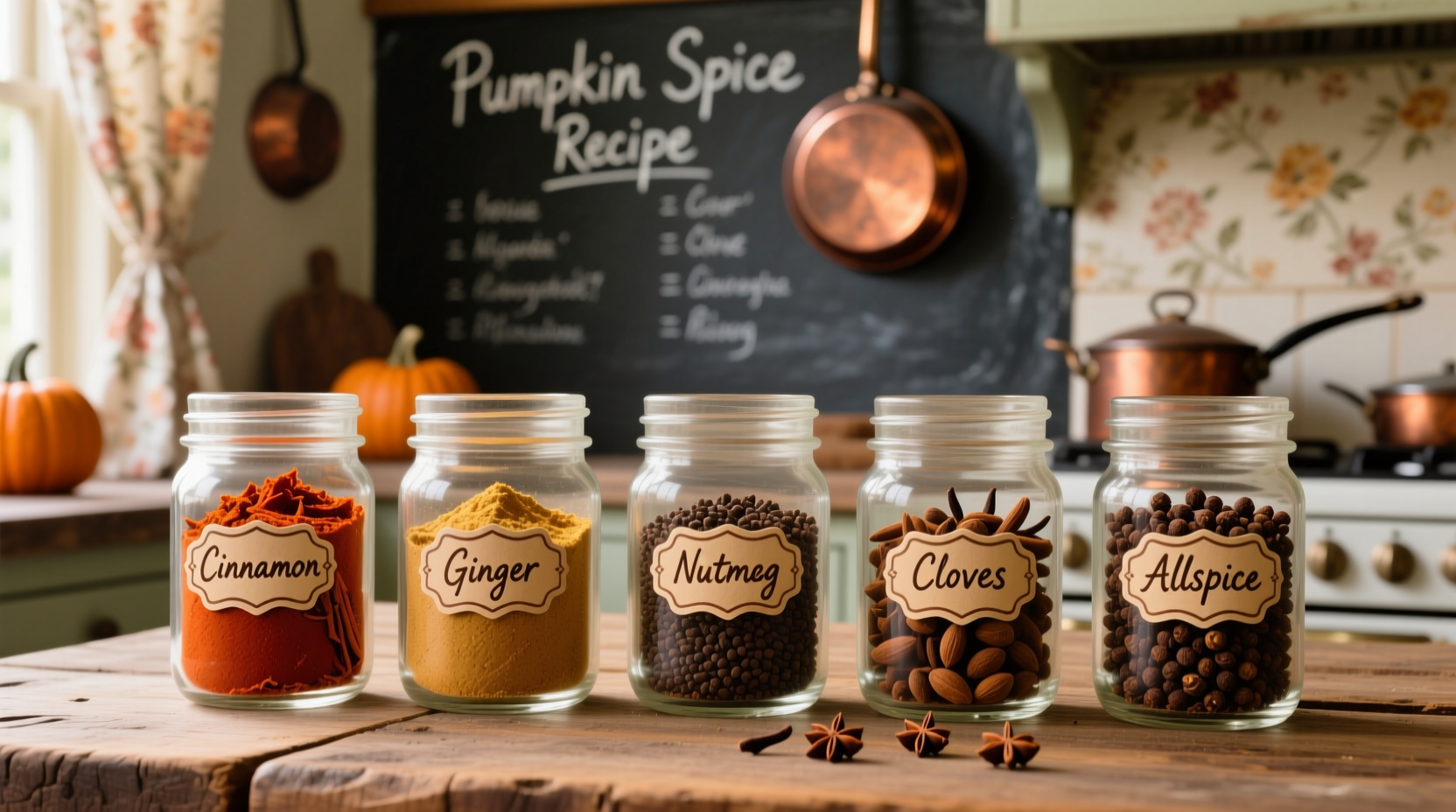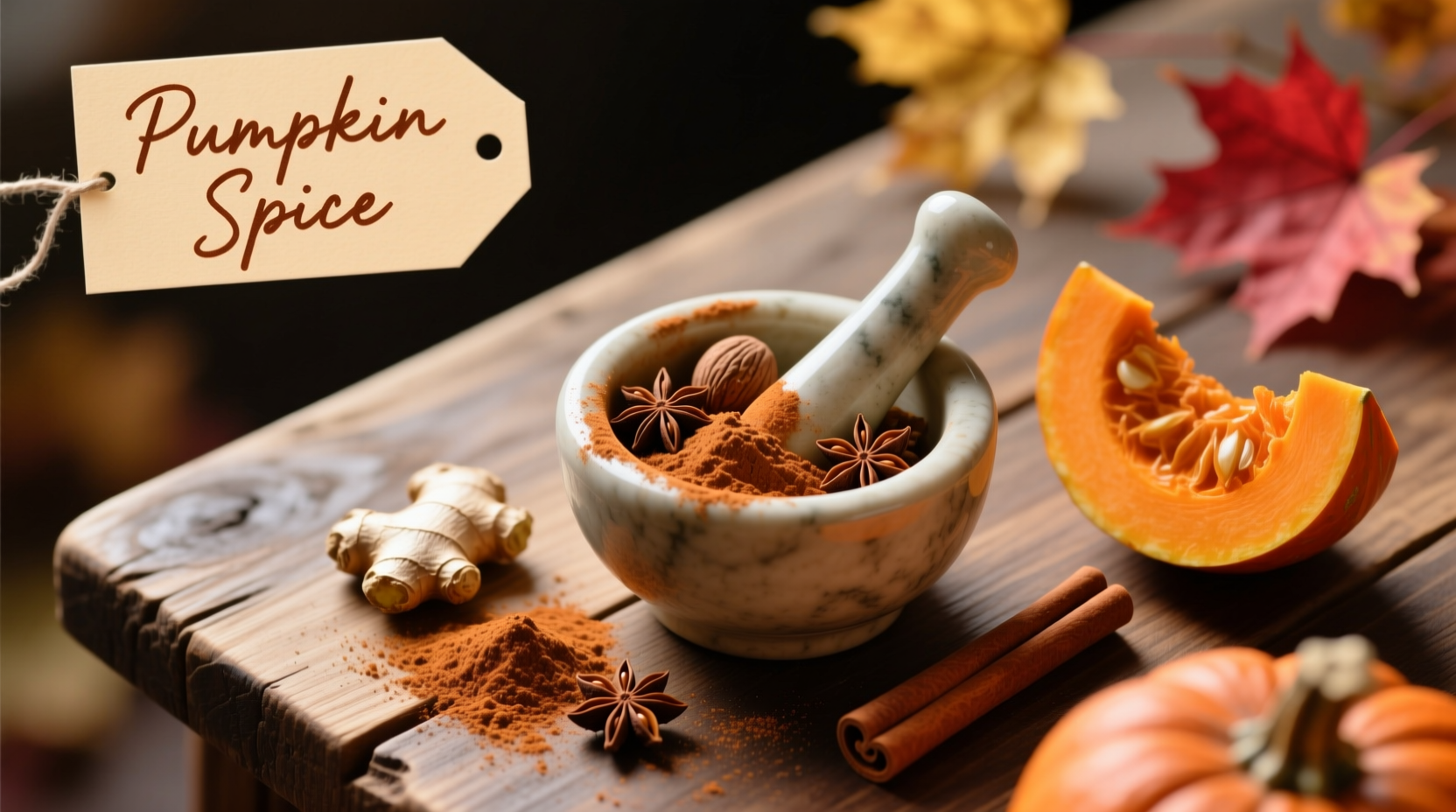Forget store-bought versions filled with additives and inconsistent flavors. Creating your own pumpkin spice blend takes just five minutes, costs less than commercial alternatives, and delivers superior freshness and customization. This guide reveals the authentic ratios professional chefs use, plus practical tips for perfecting your blend every time.
Understanding Pumpkin Spice: More Than Just a Trend
Despite its name, traditional pumpkin spice contains no pumpkin whatsoever. This beloved seasonal blend originated in 19th century America as "pumpkin pie spice"—a convenient mixture of warming spices commonly used in pumpkin pie recipes. The modern "pumpkin spice" phenomenon emerged when coffee chains adopted the term for their seasonal beverages, creating what NPR food historians call "a marketing triumph over botanical accuracy."
| Spice | Traditional Ratio | Flavor Profile | Quality Indicator |
|---|---|---|---|
| Cinnamon | 3 parts | Warm, sweet, woody | Bright reddish-brown, strong aroma |
| Ginger | 2 parts | Pungent, slightly sweet | Light yellow when rubbed between fingers |
| Nutmeg | 2 parts | Earthy, nutty, slightly sweet | Fragrant when grated fresh |
| Allspice | 1.5 parts | Complex (clove/cinnamon/nutmeg) | Whole berries preferred over pre-ground |
| Cloves | 1.5 parts | Intense, sweet, slightly bitter | Deep brown, oily when pressed |
Why Homemade Beats Store-Bought Every Time
Commercial pumpkin spice blends often contain anti-caking agents, fillers, and inconsistent spice ratios that compromise flavor. According to USDA food safety guidelines, ground spices begin losing potency within 6 months of grinding. When you make your own blend:
- You control ingredient quality and freshness
- Avoid unnecessary additives
- Customize ratios to personal taste preferences
- Save up to 40% compared to premium store brands

The Professional-Grade Recipe Process
Follow these steps for restaurant-quality results:
Step 1: Source Quality Ingredients
For optimal flavor, use whole spices and grind them yourself. The Culinary Institute of America recommends checking expiration dates—spices older than 12 months lose significant flavor compounds. Cinnamon should be Ceylon variety (softer, sweeter) rather than Cassia (more bitter) for authentic pumpkin spice flavor.
Step 2: Precise Measurement
Accuracy matters—too much clove overwhelms, while insufficient ginger creates flat flavor. Use proper measuring spoons (not tableware) for consistency. The professional standard ratio is:
- 3 tablespoons ground cinnamon
- 2 teaspoons ground ginger
- 2 teaspoons freshly grated nutmeg
- 1.5 teaspoons ground allspice
- 1.5 teaspoons ground cloves
Step 3: Thorough Mixing Technique
Combine spices in a small bowl, then transfer to a jar with tight lid. Shake vigorously for 30 seconds, then let rest for 24 hours before use. This "marrying" period allows flavors to blend properly—a technique professional chefs use for all spice mixes. Avoid storing in plastic containers, which can absorb oils and diminish potency.
Customizing Your Blend for Different Applications
Not all pumpkin spice uses require identical ratios. Adjust based on your intended purpose:
Baking Applications
For cakes, cookies, and pies, increase cinnamon by 25% and reduce cloves by 20%. The stronger cinnamon stands up to baking temperatures better, while reduced cloves prevent bitterness in sweet applications.
Beverage Blends
For lattes and hot drinks, increase ginger by 30% and add 1/4 teaspoon cardamom. The extra ginger creates a warming sensation that complements liquids, while cardamom adds complexity without overwhelming.
Savory Adaptations
When using pumpkin spice in roasted vegetables or soups, decrease cinnamon by 50% and increase nutmeg by 25%. This creates a more balanced profile that complements savory ingredients without excessive sweetness.
Storage Guidelines for Maximum Freshness
Proper storage extends shelf life and maintains flavor. Follow these evidence-based recommendations from the USDA Food Safety and Inspection Service:
- Store in airtight glass container away from light and heat
- Keep away from stove or other heat sources (reduces potency 3x faster)
- Maximum shelf life: 6 months for optimal flavor, 12 months for safe use
- Test freshness by rubbing between fingers—strong aroma indicates viability
Troubleshooting Common Blend Issues
Even experienced cooks encounter problems. Here's how to fix them:
"My blend tastes bitter"
Usually caused by excessive cloves or stale spices. Solution: Reduce cloves by 25% in next batch and ensure all spices are fresh. Never use spices older than 12 months.
"The flavor disappears after baking"
Ground spices lose potency at high temperatures. Solution: Increase total spice amount by 20% for baked goods, or add half during mixing and half after baking.
"My blend clumps together"
Moisture exposure causes clumping. Prevention: Store with a silica packet, and always use completely dry utensils when handling. If already clumped, spread on baking sheet and warm at 200°F for 5 minutes.
Practical Applications Beyond the Obvious
While pumpkin spice is famous for lattes and pies, professional chefs use it in unexpected ways:
- Whisk into morning oatmeal with a pinch of black pepper (enhances absorption)
- Mix with brown sugar for exceptional sweet potato topping
- Add 1/2 teaspoon to coffee grounds before brewing
- Create savory rubs for roasted squash or root vegetables
- Infuse into simple syrup for cocktails and mocktails











 浙公网安备
33010002000092号
浙公网安备
33010002000092号 浙B2-20120091-4
浙B2-20120091-4